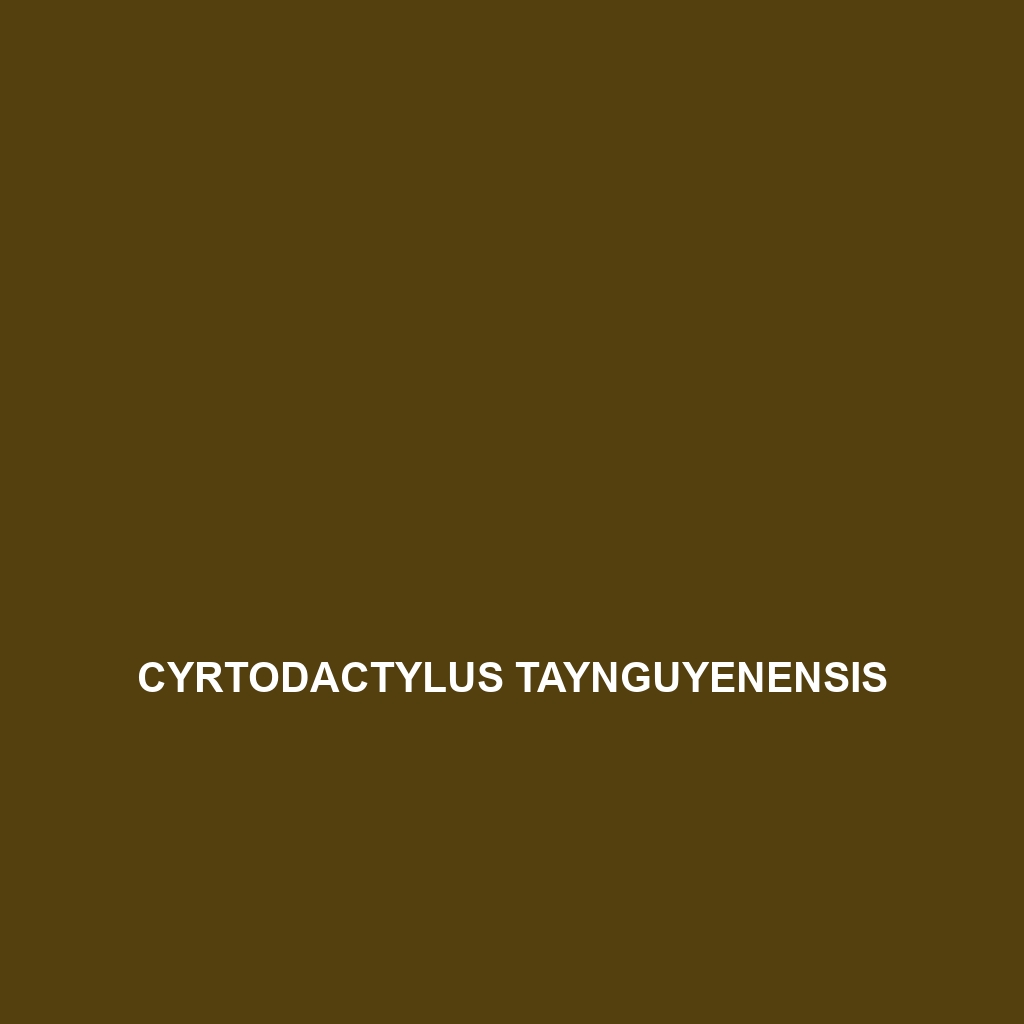Cyrtodactylus taynguyenensis
Common Name: Cyrtodactylus taynguyenensis
Scientific Name: Cyrtodactylus taynguyenensis
Habitat
Cyrtodactylus taynguyenensis is primarily found in the humid tropical forests of the Central Highlands in Vietnam. This species thrives in moist, shaded environments, particularly in areas with dense undergrowth and rocky outcrops. The specific geographic locations include the provinces of Dak Nong and Lam Dong, which offer a rich biodiversity and suitable microhabitats for these geckos.
Physical Characteristics
This species typically measures about 7 to 10 inches in length, with a slender, elongated body. The coloration of Cyrtodactylus taynguyenensis varies, featuring a mix of light brown and gray hues, often adorned with darker blotches that provide effective camouflage against the forest floor. Its distinctive flattened head and large, rounded eyes enhance its visual acuity, allowing it to navigate its forest habitat efficiently.
Behavior
Cyrtodactylus taynguyenensis exhibits nocturnal behavior, becoming active primarily at night when it hunts for insects and other small prey. These geckos are known for their agile movements and excellent climbing abilities, often seen perched on tree trunks and leaves. They communicate through a series of visual displays and body movements, which are integral to their social interactions and territorial disputes.
Diet
The diet of Cyrtodactylus taynguyenensis mainly consists of insects, including moths, beetles, and crickets. This insectivorous species plays a significant role in controlling insect populations within its habitat. As opportunistic feeders, they utilize their keen eyesight to detect and capture prey efficiently during their nocturnal foraging activities.
Reproduction
Cyrtodactylus taynguyenensis typically breeds during the rainy season, from May to September. Females lay two soft-shelled eggs, which are usually hidden beneath leaf litter or in crevices to protect them from predators. Hatchlings emerge around 60-70 days after laying, and juvenile geckos begin to exhibit adult-like behaviors shortly after their emergence.
Conservation Status
The current conservation status of Cyrtodactylus taynguyenensis is classified as Vulnerable. Habitat loss due to deforestation and agricultural expansion poses significant threats to its population. Conservation efforts are needed to protect its natural habitat and ensure the survival of this unique species.
Interesting Facts
One fascinating fact about Cyrtodactylus taynguyenensis is its ability to adapt to varying humidity levels in its environment. This adaptability allows it to thrive in both moist and drier areas of the forest. Furthermore, its unique color patterns make it a subject of interest among herpetologists and reptile enthusiasts.
Role in Ecosystem
Cyrtodactylus taynguyenensis plays a crucial role in its ecosystem as both a predator and prey. By feeding on insects, it helps maintain balanced populations of various insect species. Additionally, it serves as a food source for larger predators, contributing to the biodiversity and food web dynamics within its habitat.
